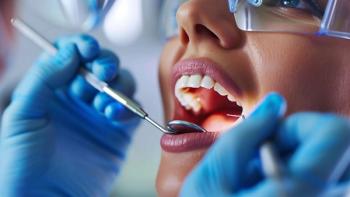
For Better and for Worse: How the COVID-19 Pandemic Changed Cancer Care
The COVID-19 pandemic drastically impacted many facets of cancer care. Although some changes were detrimental, an expert from Johns Hopkins Medicine notes others actually improved accessibility to care.
The COVID-19 pandemic has shaken up nearly every facet of life in the last couple of years, and cancer care is no exception. While the push to stop the spread of the virus sped up the use of helpful tools like telemedicine, stay-at-home orders also negatively impacted the oncology space in multiple ways.
CURE® recently sat down with
“COVID-19 has changed cancer care. We saw some of those changes have been bad, and some have been good — and I hope the good ones are here to stay,” Prowell said.
COVID-19 Delayed Screenings, Cancer Care
Prowell explained that early on in the pandemic, there was a delay in routine cancer screenings — such as annual mammograms, pap smears and colonoscopies — as well as treatments and surgeries for people who had already been diagnosed.
“We give chemotherapy on the schedule that we give it or go to surgery within a certain number of weeks for a reason. Because these are things that are important to favorable outcomes,” Prowell said. “In the case of screening, when we have people missing screening exams, we know that the results in some patients being diagnosed at a later stage may require more aggressive treatments and may be less likely to be cured.”
At first, people assumed that the pandemic would be much more short-lived, Prowell said, noting that individuals may not have been too nervous about delaying their visits with their clinicians for a couple of weeks. But weeks turned into months, and now the world is coming up on two years since the start of the pandemic.
And with the spread of the omicron variant, hospitals are finding themselves lacking the necessary resources once more.
“You may have circumstances where you have a physical bed, but you don’t have a nurse or physician, and therefore it’s either not safe to use that bed, or you have patients being cared for in a hospital with higher ratios of patient-to-health care provider than is typical,” she explained.
These things, she continued, are very detrimental to patient care.
“The longer this goes on, the more we have to ask: ‘how are we going to do this to make sure that we’re not compromising the care of people with things other than COVID-19?’”
COVID-19 Improves Flexibility in Cancer Care
However, health care shifts from COVID-19 were not entirely negative for oncology care.
“The favorable thing that has come about from the pandemic for people with cancer is that we thought about how we can be more flexible with certain things (like) is there a way that we can see patients without bringing them into the clinic? Obviously, we saw this with telemedicine,” Prowell said.
A 2021 study published in the Journal of the National Comprehensive Cancer Network found that there was
Telemedicine also helped make cancer clinical trials more accessible to patients by limiting the number of visits to the cancer center for things like signing consent forms, study visits and even attaining drugs, which may now be sent directly to a patient or their local pharmacy.
“Those sorts of innovations were made necessary by the pandemic just to keep cancer care afloat and to keep clinical research proceeding,” Prowell said. “Hopefully we demonstrate that it’s possible to do these things without compromising care and without compromising what we’re learning from clinical trials.”
For more news on cancer updates, research and education, don’t forget to




